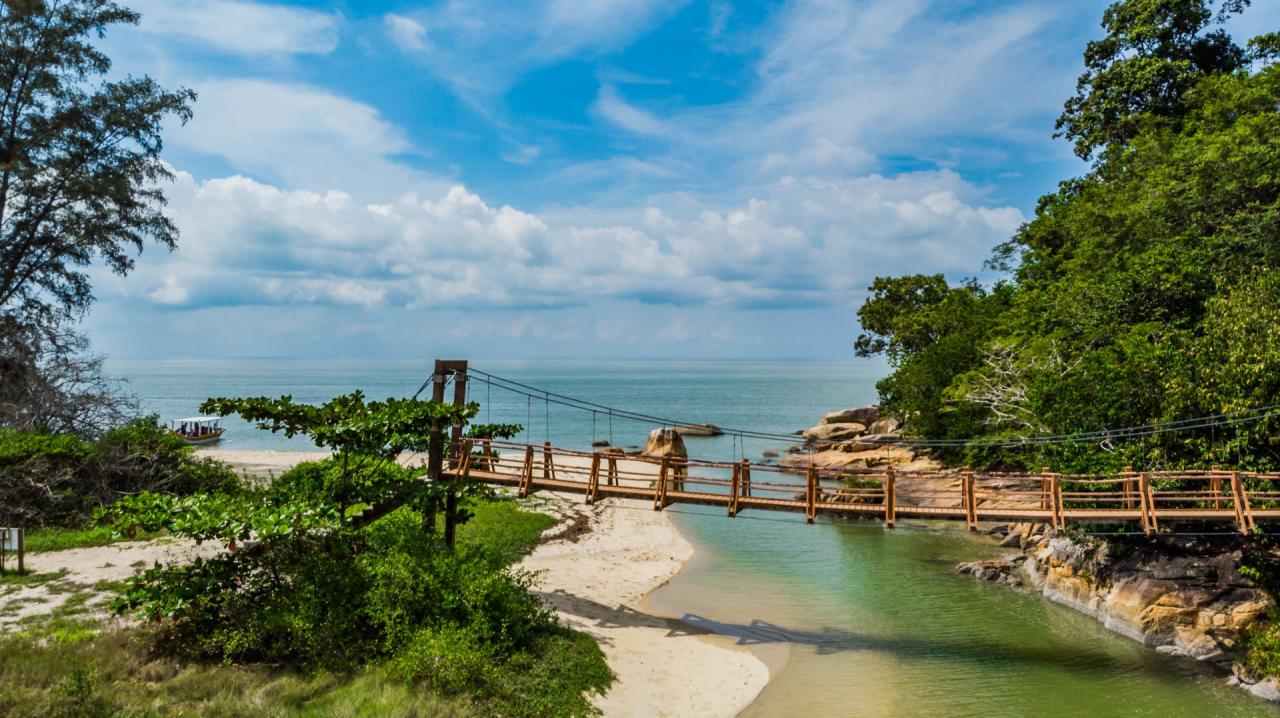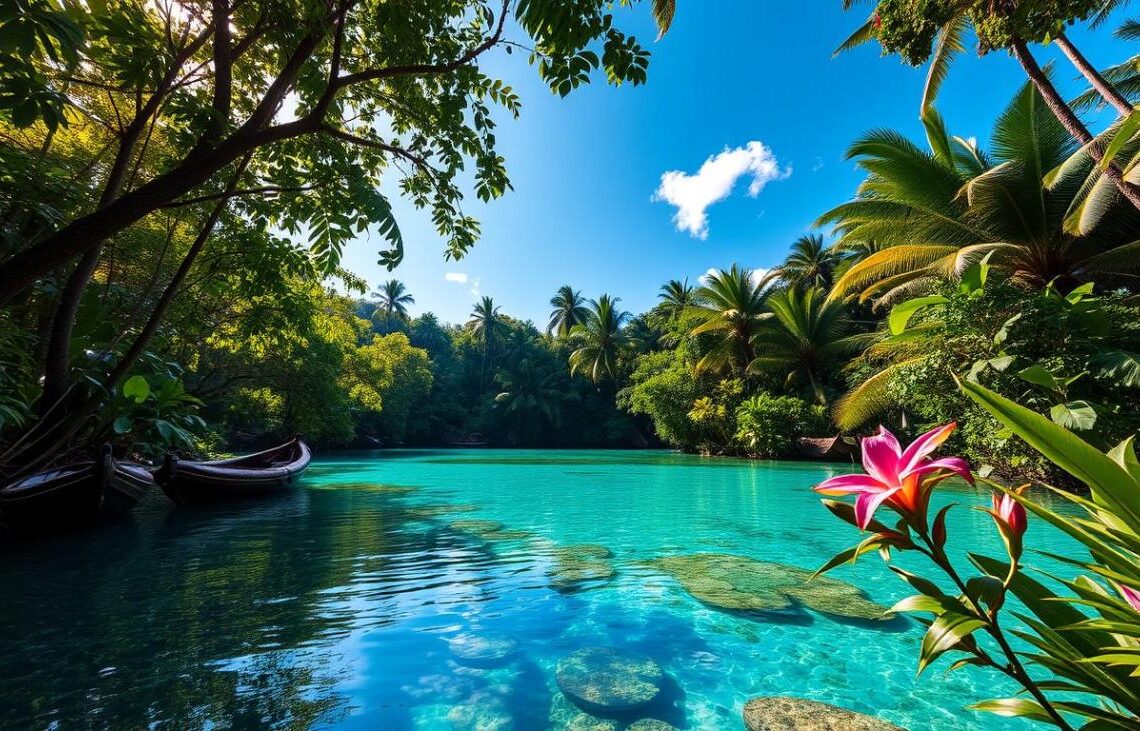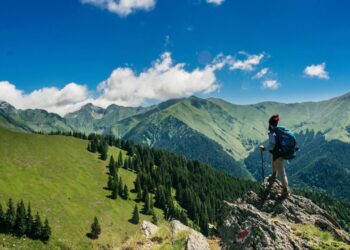In a world increasingly mapped by social media feeds and popular travel blogs, the true essence of discovery often lies beyond the well-trodden path. While iconic landmarks certainly hold their appeal, a growing number of discerning travelers are seeking out hidden gems: those captivating, often overlooked, and utterly authentic places that offer truly uncharted destinations. These are locales where genuine cultural encounters are the norm, pristine natural beauty remains unspoiled by mass tourism, and the sense of adventure is heightened by the thrill of discovering something truly unique. This comprehensive guide delves into the allure of these less-explored corners of the globe, elucidates the profound benefits of venturing off the tourist trail, addresses common misconceptions about such journeys, provides essential advice for finding and respectfully exploring these treasures, and highlights inspiring examples of destinations that promise an unparalleled sense of discovery and wonder.
Why Seek Hidden Gems?

The magnetic pull of hidden gems stems from a desire for authenticity, tranquility, and a more profound connection with a destination. It’s a rebellion against the crowded, commercialized experiences that often characterize mainstream tourism.
Here are the compelling reasons why seasoned travelers and intrepid explorers increasingly seek out these lesser-known locales:
A. Authentic Cultural Immersion:
In uncharted destinations, local life unfolds largely untouched by the demands of mass tourism. This allows for genuine interactions with residents, opportunities to observe traditional customs, and the chance to experience a culture in its unadulterated form. You’re not just a tourist; you’re a temporary participant in a vibrant, living community.
B. Unspoiled Natural Beauty:
Many hidden gems are places where nature still reigns supreme, untarnished by excessive development or over-tourism. Think pristine beaches, untouched forests, serene mountains, and vibrant ecosystems that thrive without constant human interference. The air is cleaner, the views are more breathtaking, and the sense of peace is palpable.
C. A Sense of True Discovery and Adventure:
There’s an inherent thrill in exploring places that few others have seen. This contributes to a heightened sense of adventure and personal accomplishment. You become a pioneer, crafting your own unique narrative rather than following a well-worn script. Every turn can reveal an unexpected wonder.
D. Escape from Crowds and Commercialization:
For many, the biggest draw is the tranquility. Hidden gems offer a respite from the clamor of popular tourist hotspots, providing space for introspection, relaxation, and genuine connection with your surroundings. The absence of souvenir shops and aggressive touts allows for a more peaceful and meaningful experience.
E. More Affordable Experiences:
Often, less popular destinations haven’t inflated their prices to cater to mass tourism. This means that accommodation, food, and activities can be significantly more affordable, allowing your travel budget to stretch further and enabling longer, more enriching stays.
F. Support for Local Economies:
By visiting hidden gems, travelers often directly support smaller, locally-owned businesses that might otherwise struggle to compete with large, international chains. This ensures that the economic benefits of tourism genuinely uplift the communities, fostering sustainable development rather than external exploitation.
G. Personal Growth and Resilience:
Navigating unfamiliar territories with less readily available information or infrastructure pushes travelers outside their comfort zones. This fosters adaptability, problem-solving skills, and a deeper reliance on intuition, leading to significant personal growth and a boosted sense of confidence.
Uncharted Travel Realities
Concerns about safety, accessibility, and comfort often deter travelers from exploring hidden gems. Let’s address these common misconceptions.
A. They Are Dangerous or Unsafe:
Not necessarily. While some remote areas may require more careful planning, many “uncharted” destinations are perfectly safe, often safer than bustling tourist cities with higher rates of petty crime. Safety comes down to research, common sense, and local awareness, regardless of how popular a destination is.
B. They Are Inaccessible and Hard to Reach:
While some may require a bit more effort (a longer bus ride, a local ferry, or an internal flight), many hidden gems are simply off the main tourist circuit, not entirely cut off from the world. The journey itself can be part of the adventure and adds to the sense of accomplishment.
C. They Lack Infrastructure or Comfort:
“Uncharted” doesn’t mean primitive. Many hidden gems offer charming guesthouses, boutique hotels, or eco-lodges that provide comfortable, clean, and often authentic accommodations. While luxury might be different (e.g., rustic charm over five-star amenities), comfort is often present, tailored to the local environment.
D. There’s Nothing to Do There:
The activities in hidden gems are often more organic and immersive. Instead of theme parks, you might find local festivals, artisan workshops, pristine hiking trails, or opportunities to learn traditional crafts. The “doing” is often about experiencing life as it is, rather than a curated tourist attraction.
E. Language Barriers are Insurmountable:
While English might not be as widely spoken as in major tourist hubs, communication is often possible through gestures, translation apps, or the kindness of locals. These interactions can be incredibly rewarding and memorable, fostering cross-cultural connections.
F. They Are Only for Experienced, Hardcore Travelers:
While some hidden gems require a certain level of independence, many are suitable for anyone willing to step slightly outside their comfort zone. Beginner adventurous travelers can find plenty of less-trodden paths that are still relatively easy to navigate.
The Art of Finding Hidden Gems
Discovering uncharted destinations requires a different approach than simply typing “best places to visit” into a search engine. It’s about deep research, local insights, and a willingness to explore.
A. Go Beyond the First Page of Google:
- Deep Dive Online Forums: Explore travel communities like Reddit (e.g., r/travel, r/solotravel), specialized travel blogs focusing on less-visited regions, and niche interest groups.
- Search for Local Blogs and News: Look for information from within the country itself, not just international travel sites.
- Use Specific Keywords: Instead of “best beaches in X country,” try “secluded beaches X country” or “offbeat towns X country.”
B. Leverage Social Media (Responsibly):
- Instagram Location Tags: Look for less-tagged locations or photos from local accounts rather than just popular influencers.
- Pinterest: Search for “unusual places,” “off the beaten path,” or “local experiences.”
- Travel Groups: Join Facebook groups dedicated to specific regions or types of travel (e.g., “South America Backpackers”) and ask for recommendations.
C. Consult Niche Travel Resources:
- Specialized Guidebooks: Lonely Planet’s “Offbeat” series or independent travel publishers often highlight lesser-known spots.
- Documentaries and Travel Shows: Many focus on remote or culturally rich areas.
- Academic or Anthropological Journals: Can provide insights into unique cultural sites or natural wonders.
D. Talk to Local Experts and Fellow Travelers:
- Ask Locals: Once you’re in a country, ask your guesthouse owner, local guides, or friendly shopkeepers for their favorite, less-known spots. “Where do you go on your day off?”
- Connect with Long-Term Travelers: Backpackers or digital nomads who have spent extended periods in a region often have invaluable insights into hidden gems.
- Travel Agents Specializing in Niche Travel: Some agents focus solely on adventure, cultural immersion, or specific remote regions.
E. Utilize Maps and Satellite Imagery:
- Google Maps/Earth: Zoom in on regions, look for less developed coastlines, small villages not on main roads, or green areas without extensive infrastructure.
- Topographical Maps: For hikers and adventurers, these can reveal hidden trails, peaks, and remote lakes.
F. Be Open to Serendipity:
- Don’t Over-Plan: Leave room in your itinerary for spontaneous detours based on local recommendations or unexpected discoveries.
- Follow Your Curiosity: If a path looks intriguing or a sign points to a local attraction, consider exploring it.
Exploring Uncharted Destinations Responsibly
Discovering hidden gems comes with a responsibility to preserve them. Ethical and sustainable practices are paramount.
A. Respect Local Culture and Traditions:
- Learn Basic Phrases: A simple “hello,” “thank you,” or “excuse me” in the local language shows respect.
- Observe Customs: Dress modestly when visiting religious sites, ask before taking photos, and be mindful of local etiquette regarding greetings, gestures, and social interactions.
- Support Local Businesses: Choose locally-owned guesthouses, restaurants, and shops. Buy authentic handicrafts directly from artisans.
B. Minimize Your Environmental Impact:
- Leave No Trace: Carry out all your trash, including organic waste.
- Conserve Resources: Be mindful of water and energy usage, especially in remote areas where resources might be scarce.
- Stay on Marked Paths: Protect fragile ecosystems by not venturing off designated trails.
- No Souvenirs from Nature: Do not collect rocks, shells, plants, or other natural items.
- Avoid Single-Use Plastics: Carry a reusable water bottle, coffee cup, and shopping bag.
C. Be a Conscious and Ethical Traveler:
- Do Not Exploit: Avoid activities that exploit animals (e.g., elephant riding, interactions with captive wildlife) or vulnerable populations.
- Bargain Fairly (if customary): Do so respectfully and understand that a small difference for you can be significant for a local.
- Be Mindful of Your Presence: Remember that you are a guest. Your actions reflect on all tourists.
- Avoid Over-Tourism: If a hidden gem starts to become popular, consider seeking out new ones to help distribute tourist impact.
D. Support Local Economies Directly:
- Direct Bookings: Book accommodations and tours directly with local providers when possible, rather than through large international platforms that take a significant commission.
- Eat Local: Frequent local markets and street food vendors.
- Hire Local Guides: Their knowledge is invaluable, and it provides direct income to the community.
E. Prepare for Limited Infrastructure:
- Carry Essentials: Be prepared for less readily available ATMs, pharmacies, or modern conveniences. Carry a basic first-aid kit, enough cash, and any necessary medications.
- Patience and Adaptability: Things might operate at a slower pace or not as efficiently as you’re used to. Embrace the local rhythm.
- Reliable Communication: Consider a local SIM card or a satellite communication device if venturing truly off-grid.
Destinations Awaiting Discovery

While the true “hidden gems” are constantly shifting, and part of the fun is finding your own, here are examples of regions or types of destinations that consistently offer authentic, less-crowded experiences:
A. Albania (The Albanian Alps & Southern Coast):
- Why: Often overlooked in favor of its Mediterranean neighbors, Albania boasts dramatic mountain ranges (like the Accursed Mountains for hiking), pristine beaches along the Ionian Sea, ancient ruins, and welcoming locals, all at incredibly affordable prices.
- Experiences: Trekking the Peaks of the Balkans trail, exploring historic Berat, relaxing on the beaches of Dhërmi, discovering remote villages.
B. Kyrgyzstan (Central Asia):
- Why: A landlocked country of breathtaking natural beauty, known for its vast steppes, towering Tien Shan mountains, nomadic culture, and pristine alpine lakes. Tourism is developing but remains authentic.
- Experiences: Horse trekking with nomadic families, staying in traditional yurts, hiking in unspoiled landscapes, experiencing the World Nomad Games (if timed right).
C. The Faroe Islands (North Atlantic):
- Why: Though gaining popularity, these remote, rugged islands between Iceland and Norway offer dramatic cliffs, cascading waterfalls, grass-roofed houses, and a unique Viking-influenced culture. Still far less crowded than Iceland.
- Experiences: Incredible hiking, birdwatching (especially puffins), exploring quaint villages, experiencing the dramatic, ever-changing weather.
D. Colombia’s Pacific Coast (e.g., Nuquí, Bahía Solano):
- Why: While Colombia itself is popular, its Pacific coast remains wild, remote, and less visited. It’s a rainforest-meets-ocean paradise, rich in Afro-Colombian culture and incredible biodiversity.
- Experiences: Whale watching (seasonal), surfing, exploring pristine beaches, jungle trekking, learning about local Afro-Colombian traditions, sustainable fishing.
E. Slovenia’s Soca Valley:
- Why: While Slovenia is known for its green initiatives, the stunning Soca Valley, with its emerald river, is an outdoor adventure paradise that flies under the radar compared to other European mountain regions.
- Experiences: Whitewater rafting, kayaking, canyoning, hiking, paragliding, fly fishing, and exploring WWI history.
F. Remote Greek Islands (e.g., Anafi, Folegandros, Astypalaia):
- Why: Beyond the well-known Cyclades, many smaller Greek islands retain their traditional charm, offering tranquil beaches, authentic villages, and a slower pace of life without the mass tourist crowds.
- Experiences: Relaxing on secluded beaches, enjoying local tavernas, exploring traditional architecture, genuine island hospitality.
G. Georgia (Caucasus Region):
- Why: A country where ancient history meets stunning mountain landscapes and a famously hospitable culture. It’s gaining recognition but still offers many unexplored corners.
- Experiences: Exploring ancient cave cities (Vardzia), trekking in the Svaneti region (Ushguli), wine tasting in Kakheti, experiencing warm Georgian hospitality.
These are just a few examples, and the true joy lies in discovering your own hidden gems, guided by curiosity and a spirit of adventure.
The Enduring Impact of Hidden Gem Journeys
Venturing to hidden gems offers more than just a memorable trip; it imprints lasting lessons and profound changes on the traveler.
A. Broadened Perspectives:
Engaging with truly distinct cultures and living outside your comfort zone fundamentally shifts your worldview, fostering greater empathy and understanding of global diversity.
B. Increased Self-Reliance:
Navigating places with less established tourist infrastructure hones your problem-solving skills, adaptability, and confidence in your own abilities.
C. A Deeper Appreciation for Simplicity:
Experiencing life in less developed areas can highlight the value of simplicity, local resources, and human connection over material possessions.
D. Unforgettable Stories and Memories:
The unique, unexpected encounters in uncharted territories become the most cherished and talked-about travel tales.
E. A Sense of Purposeful Travel:
By consciously choosing to support local communities and protect environments, your travel becomes more meaningful and impactful.
F. The Thrill of the Chase Continues:
Once you’ve experienced the joy of discovering a hidden gem, the desire to find more of these unique places often becomes a lifelong passion.
Conclusion
The world is vast, and beyond the familiar postcards lie countless hidden gems waiting to be uncovered. Embracing the spirit of uncharted destinations offers a profound opportunity to travel authentically, connect deeply with diverse cultures, and marvel at unspoiled natural wonders. It demands curiosity, respect, and a willingness to step beyond the well-trodden path, but the rewards—a richer understanding of our planet, meaningful personal growth, and a treasure trove of unique experiences—are truly invaluable. So, next time you plan an escape, consider trading the guidebook for a map and a sense of adventure. Your next great discovery awaits.














